Wall Street Bombing 1920
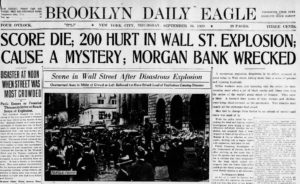
Newspapers the day after the wall street bombing, 1920
“[It was] an unexpected, death-dealing bolt, which in a twinkling turned into a shamble the busiest corner of America’s financial center. […] Almost in front of the steps leading up to the Morgan bank was the mutilated body of a man. Other bodies, most of them silent in death, lay nearby. As I gazed horrorstruck at the sight, one of these forms, half-naked and seared with burns, started to rise. It struggled, then toppled and fell lifeless to the gutter.” George Weston, an Associated Press reporter, described what he had witnessed from the protection of a doorway.
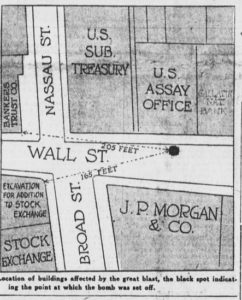
The Sun and New York Herald
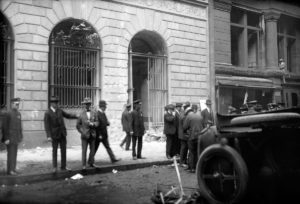
Apic/ Getty Images
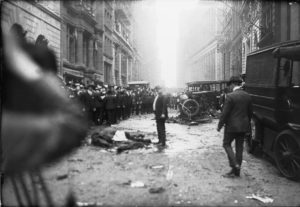
Interim Archives/Getty Images
At 12:01 pm on Thursday, September 16, 1920 a wagon filled with 100 pounds of dynamite detonated outside J. P. Morgan building during lunchtime at 23 Wall Street in Manhattan, New York City. The blast, which was the most lethal act of terrorism on U.S. soil up to that point, caused $2 million dollars in damage ($24.5 million today) and killed 38 people, while more than 300 people sustained injuries.
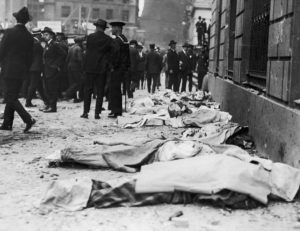
FPG/Hulton Archive/Getty Images
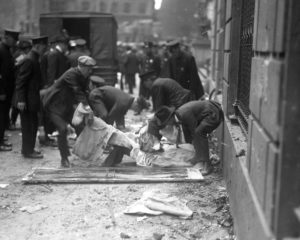
NY ِDaily News/Getty Images
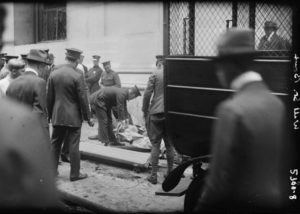
Bain News Service (Library of Congress)/Public domain
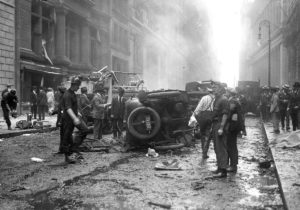
NY Daily News/Getty Images
Within one minute of the explosion, William H. Remick, president of the New York Stock Exchange, suspended trading in order to prevent a panic. Yet the following day, the stock market began its work as normal, yielding to give up against terrorism and panic.
The day after the attack, a message was found in a mailbox a block from the attack, which said:
Remember. We will not tolerate any longer. Free the political prisoners or it will be death for all of you. American Anarchist Fighters!”

Police Sketch of The Possible Attacker
IMAGE: NY Daily News/Getty Images
However, nobody claimed responsibility for the bombing and although all the investigations and police work, the true identity of the perpetrators was never found.
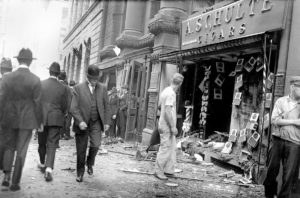
NY Daily News Archive/ Getty Images
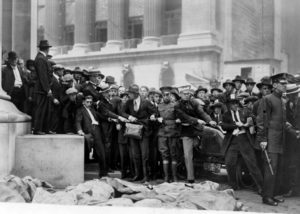
New York World-Telegram and the Sun Newspaper Photograph Collection (Library of Congress)/Public domain
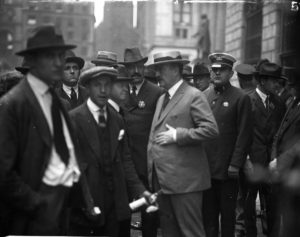
New York Daily News/NY Daily News Archive/Getty Images
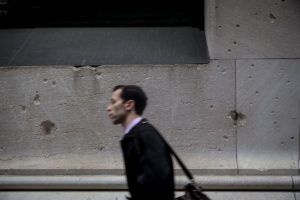
The Facade of The 23 Wall Street Today
IMAGE: Alex Q. Arbuckle/Mashable
Further Reading
– The Mysterious Wall Street Bombing, 95 Years Ago
– The Wall Street Bombing: Low-Tech Terrorism in Prohibition-Era New York
– A Byte Out of History: Terror on Wall Street
– Sep 16, 1920: The Bombing of Wall Street
– Anger and Anarchy on Wall Street
– Pictures: Wall Street 1920 Bombing
– New York Stories: How a deadly terrorist attack on Wall Street in 1920 still echoes today
– When Wall Street Exploded – In 1920
